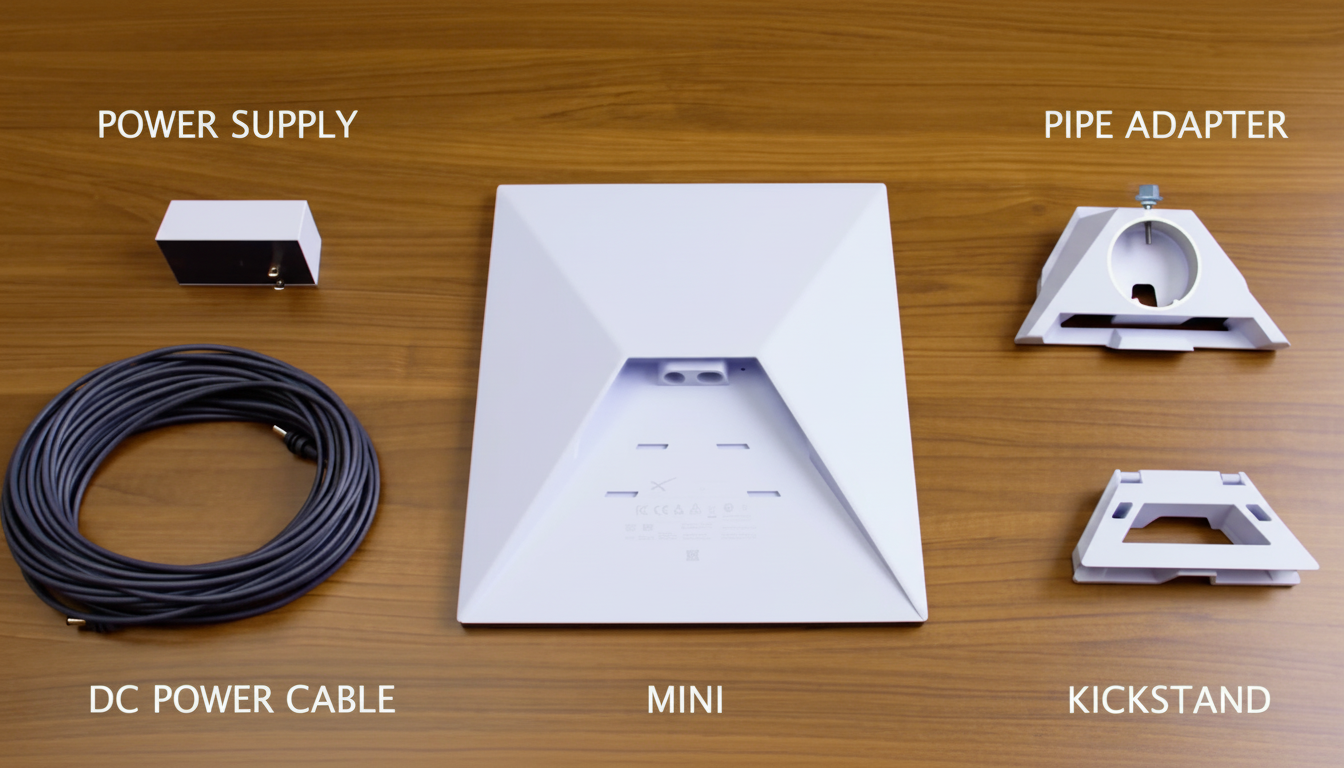Considering firing up a Starlink Mini in the cockpit? SpaceX is capping that plan — and it’s not about the bandwidth. The company is implementing an operating-speed limit on its Starlink Mini and other mobile-tiered services outside of the atmosphere, in essence, funneling faster aircraft to its dedicated—and vastly more costly—aviation service.
Customer notices detail that a new cap will be implemented that reduces the maximum supported terminal speed from 550 mph (471 knots) down to 450 mph (391 knots) on business-focused Priority and Starlink Roam plans. The cap is applied to the speed at which the terminal is moving, not your download speed.

What Changed and Which Types of Aircraft Are Affected
The policy applies to Starlink Mini users on Roam ($165 monthly) as well as Local/Global Priority plans more common with businesses. Under the limit you go, and service carries on; above it, and service can be predicted to either suspend or start degrading as long as you’re in that envelope.
Wordlessly, this separates wide swaths of general aviation from the jet set. Many single-engine piston aircraft cruise at around 120–180 knots and turboprops clock in around the 250–330 knot range—far below the cap. Light and midsize jets, however, typically cruise between 430 and 500 knots, so most will outrun the new limit at altitude.
The change comes after a wave of pilots who flew with the portable-sized Mini, which SpaceX had approved in small planes.
Aviation experts point out that some private jet operators turned to the Mini as a budget workaround, even though it is not an aviation-certified system.
Why Speed Limits Matter in LEO Terminals
Starlink’s LEO satellites zoom around the Earth at about 7.5 km/s, and an ultra-fast terminal just exacerbates the relative motion by increasing Doppler shifts, narrowing down pointing tolerance for phased-array antennas, and faster satellite handoffs. Each of those can raise the odds of packets being dropped and could ripple into network stability for users around you who share the same beams.
By setting a terminal-velocity cap on consumer and enterprise Roam tiers, SpaceX limits edge-case dynamics that stress tracking algorithms and ISL scheduling. It’s a classic trade of network management: sacrificing a bit of mobility for some users enables more predictability and quality of service across the bigger footprint.

Another likely factor is fairness. Roam and Priority plans are priced and allocated for dedicated land, sea (v1 or v2), minimal in-motion use — but not long-term jet-cruise usage. Speed gating helps to ensure those tiers are used as intended, a point that SpaceX has stressed in its filings with the Federal Communications Commission.
The Expensive Off-Ramp: Starlink Aviation Pricing Details
SpaceX’s email directs speedy flyers to Starlink Aviation, the company’s in-flight internet service. That plan is for jets and airliners, and priced appropriately at $10,000 a month for unlimited data or $2,000 a month for 20GB, with special hardware and aircraft installation controlled by supplemental type certificates regulated by authorities like the FAA in the case of U.S. carriers or the EASA in Europe.
In addition to certified hardware, Aviation customers receive priority capacity and performance optimized for high true airspeeds, steep turn rates, and dynamic conditions associated with satellite handovers—situations consumer-grade equipment simply wasn’t designed to handle. For charter and corporate operators, the reliability of purchase and regulatory certainty can often justify the premium.
How Enforcement Will Probably Work on Mobile Starlink
Starlink terminals have GPS and inertial sensors, so speed gating can be enacted on the unit. Going past the point, the terminal can throttle or pause your sessions until you decelerate and continue moving below this cap. And because the limit is connected to terminal velocity, you’ll need to pay attention not just to airspeed but also cruising ground speed, especially in high tailwinds.
The effect on pilots of slower aircraft should be benign. Most all of the training aircraft, backcountry planes, and turboprops will stay inside the envelope, with the exception of Minis for weather and messaging/EFB updating in flight. For jets, the ceiling effectively sets a limit to the “carry-on Starlink” era at normal cruise.
The Bigger Mobility Strategy Behind Starlink Plan Segments
SpaceX has been slowly dividing up applications for mobile usage — RV, maritime, enterprise, and aviation — each with a unique price point, piece of hardware, and network priority. The new speed limit is another stepping stone in that edifice, clarifying the divisions between consumer and aviation-grade mobility.
For the broader market, however, the change is a signal that, now that Starlink is scaling up its operations, policy tweaks will continue to be made in order to balance physics, capacity, and customer expectations. For pilots, the distinction is now clearer: flying slower with Mini or flying faster with Aviation.

